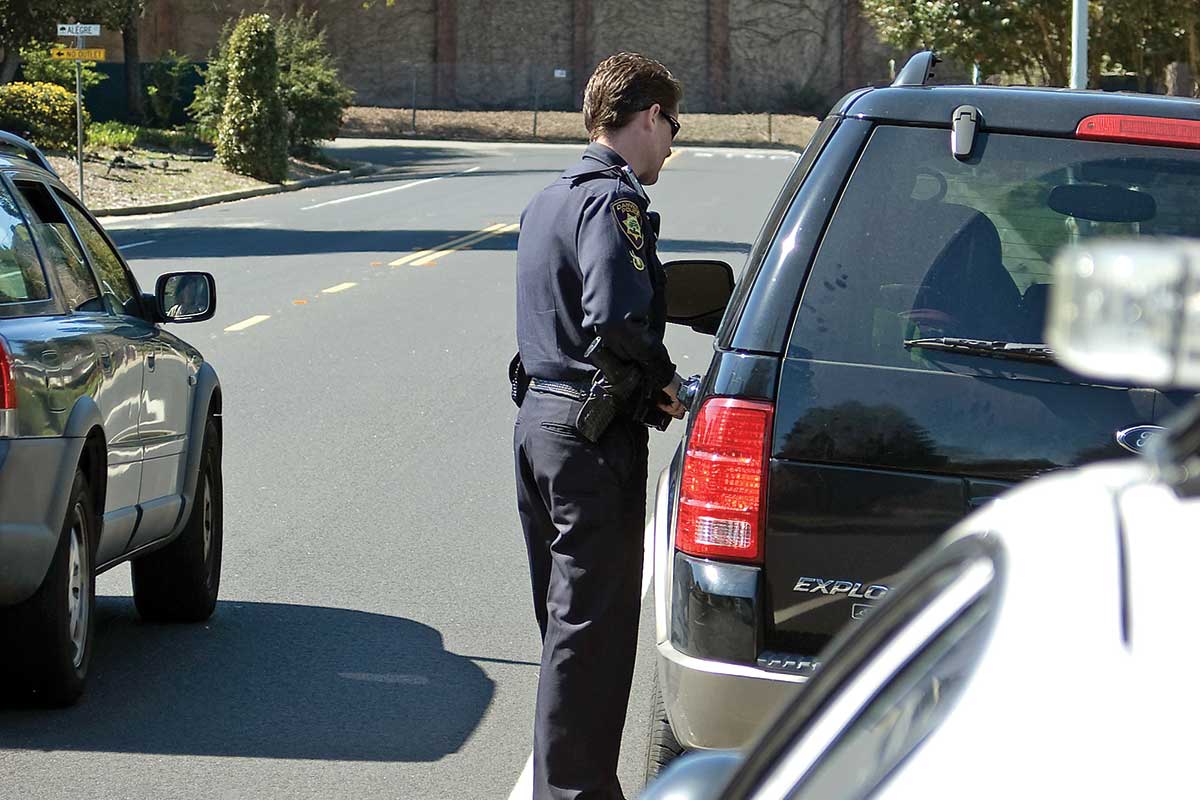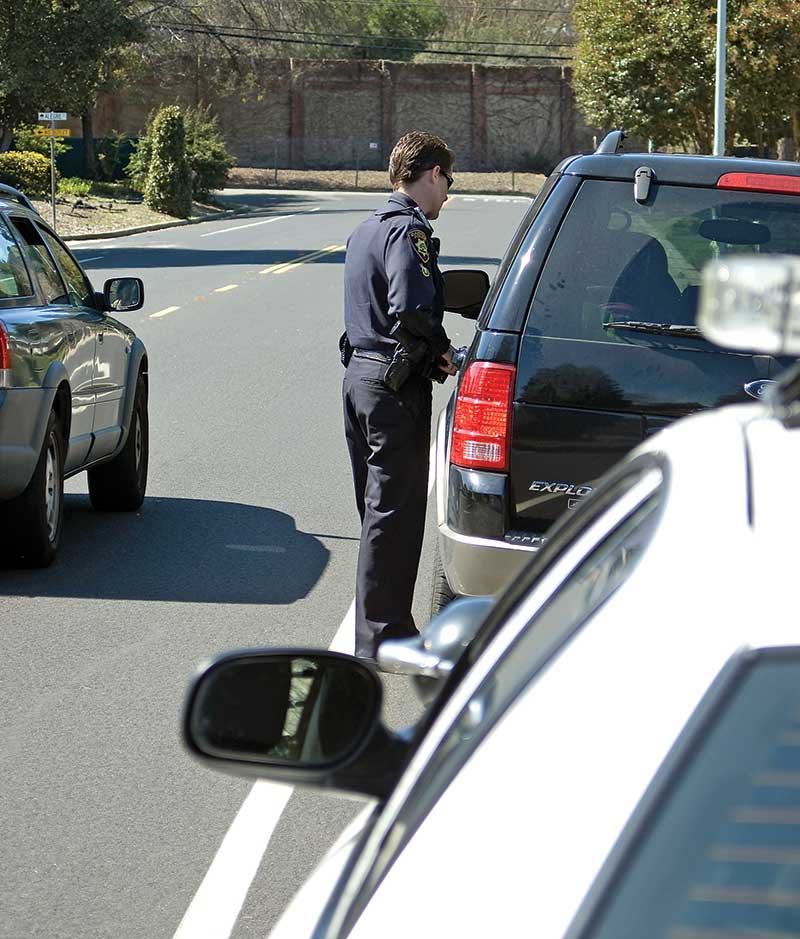
ACJA10_Traffic_1_3-800
We’ve all heard the two most dangerous parts of our job are the domestic violence (DV) call and the traffic stop. Parking in front of the DV house isn’t a smart thing to do and, at some point, we have to walk to the door, listen and knock. There aren’t a lot of ways to safely approach a house, but what about your approach on a traffic stop? Do you approach the driver’s side or the passenger side?
My academy training and subsequent field training, which was more than 10 years ago, focused only on making a driver’s side approach when on a traffic stop. There was never any thought given to another method and it wasn’t until I became a motor cop I was introduced to the idea of making a passenger side approach. Like most everything else in law enforcement, there’s more than one way to skin a cat. Both methods have their pros and cons, but does one outweigh the other?
BULL’S-EYE ON YOUR BUTT
A driver’s side approach enables the officer to keep almost constant eye contact on the driver. On most stops I conduct I see the driver looking in either the side mirror or rear view mirror. I figure if they’re looking at me (or for me), they aren’t looking for their gun or some other implement they could use to harm me. The downside to approaching on the driver’s side is it’s become so routine, folks expect it. And if something is expected, it can be planned for. I don’t want to become so predictable I’m putting myself in unnecessary risk.

Being this close to the travel lane on a residential street is unsettling. Put this same “stop” on a freeway and you’re asking for it.
Another serious issue with a driver’s side approach is passing traffic. I don’t need my backside hanging out there as a big bull’s-eye for some fool driver in their 1987 Bonneville
to whack. With my attention focused on the occupants of the vehicle I’ve stopped and my back turned to traffic, I’m in a dangerous position. We’ve all seen the videos of officers hit by a passing vehicle. It doesn’t seem to matter whether it’s day or night, or how far onto the shoulder they are — pow!
RIDE SIDE
Approaching from the passenger side tends to catch occupants of a stopped vehicle by surprise and anytime I can have surprise working on my side is a plus in my book. I’ve found myself standing next to the passenger door and counting to 10 before gently tapping on the window to get the driver’s attention as he/she is staring expectantly out the driver’s side window waiting for my approach. By the time I get their attention, I can scan nearly the entire interior of the vehicle and see the hands of all the occupants before they even know I’m there.
Conversely, the passenger side approach offers more protection from traffic. I vividly remember a video of a car stop where the officer had the driver step outside the car. Initially, she was standing between the patrol car and her vehicle. The officer told her to step away from between the two cars, as it was a dangerous place to be. Not 30 seconds later, a car crashed into both the patrol car and her vehicle. Had she been standing between the two, she’d have almost certainly been killed.

You’re safer on this side for several reasons — lower risk of being hit by a passing vehicle, it provides an avenue of escape and they’re not expecting you here.
Had the officer left her in the vehicle and approached on the driver’s side with his back turned to traffic, he wouldn’t have stood a chance.
In researching this topic, I conducted a highly scientific poll of my fellow officers via Facebook and Twitter. I discovered there are as many opinions as officers with regard to this topic. The overwhelming opinion, however, was a valid one. Simply put, it depends. How’s that for specific? It’s true, though. There’s no such thing as a “routine” traffic stop. Each one is its own entity. They become routine when the violator drives away with a citation firmly clenched in-hand. Until then, each is unique and offers its own challenges.
How can seasoned officers not be definitive of what they do? Easy; they’re seasoned and what comes with time is the ability to see there is more than one way to do most everything in this job. Veteran officers understand the unique circumstances each stop offers that dictates how they approach a stopped vehicle. How many occupants are there? What time of day is it? Where did the stop occur? All of these questions can and should influence how you approach a car. At the end of the day, it’s our duty to go home to our families. Don’t be-come so ingrained in one way or another you can’t see your way clear to try something different.













